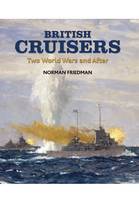Naval Anti-Aircraft Guns and GunneryAuthor :
Hardback
Published : Tuesday 21 January 2014
You may also like ...

by
Hardback
07 Aug 2020
>>
€48.20
Extended stock - Dispatch 5-7 days

by
Hardback
18 Nov 2010
>>
€54.23
Extended stock - Dispatch 5-7 days

by
Paperback
08 Aug 2019
>>
€9.63
Extended stock - Dispatch 5-7 days

by
Hardback
01 Jul 2019
>>
€48.20
Extended stock - Dispatch 5-7 days
Description
Authoritative, comprehensive and highly original Full technical details, with much new information and insight; many plans and close-up photographs of weapons
This book does for naval anti-aircraft defence what the author's Naval Firepower did for surface gunnery - it makes a highly complex but historically crucial subject accessible to the layman. It chronicles the growing aerial threat from its inception in the First World War and the response of each of the major navies down to the end of the Second, highlighting in particular the widely underestimated danger from dive-bombing. Central to this discussion is an analysis of what effective AA fire-control required, and how well each navy's systems actually worked. It also takes in the weapons themselves, how they were placed on ships, and how this reflected the tactical concepts of naval AA defence. As would be expected from any Friedman book, it offers striking insights - he argues, for example, that the Royal Navy, so often criticised for lack of 'air-mindedness', was actually the most alert to the threat, but that its systems were inadequate not because they were too primitive but because they tried to achieve too much. The book summarises the experience of WW2, particularly in theatres where the aerial danger was greatest, and a concluding chapter looks at post-1945 developments that drew on wartime lessons. All important guns, directors and electronics are represented in close-up photos and drawings, and lengthy appendices detail their technical data. It is, simply, another superb contribution to naval technical history by its leading exponent.
Reviews